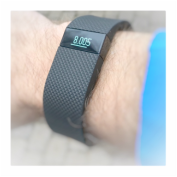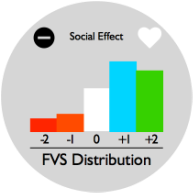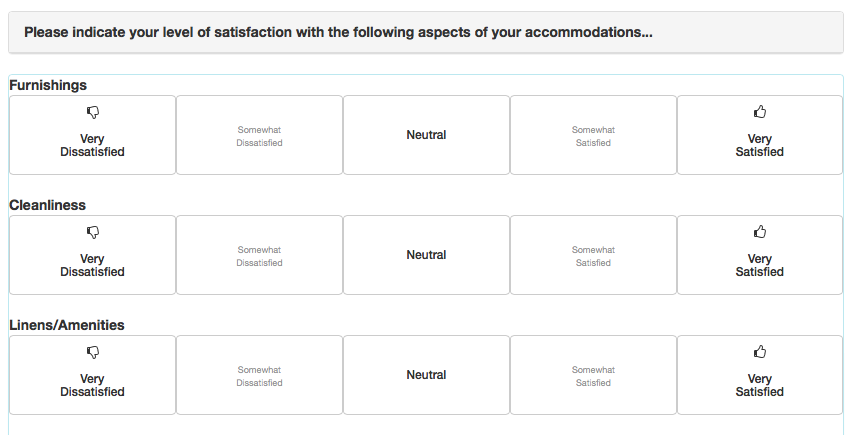|
Recently, one of our hotel clients' guests posted the following comment as part of their guest satisfaction survey:
"We come yearly and I have never been disappointed." In response to the survey question whether their experience exceeded, met, or did not meet expectation, the guest ticked "met". Finally, our scoring algorithm computed 94 (max = 100) for this guest's overall evaluation of their stay. The point of bringing this up is because it is a real world illustration of a position we put out a few years ago on the idea of expectations. We recently republished the complete text on our blog, but the main idea is that managing expectations can be complicated. On first blush, one might think that if you are not consistently exceeding expectations you are doing something wrong. Think about this though- if your customers expect you to always exceed their expectations, how can you? At the end of the day, our position is that meeting expectations is ok (and our scoring algorithm accounts for this), but understanding what drives those expectations is more important.
0 Comments
In our guest satisfaction surveying model, the first question we ask guests is how their stay met with their expectations. There are 3 response choices; exceeded, met, or did not meet.
So let's flip things around for a second: what's reasonable for you, the hotelier, to expect in terms of responses to this question? The knee-jerk response to that question is that you'd like to exceed the expectations of every guest. On a theoretical level I suppose that's true, but practically speaking I'll make the case below as to why you really don't want that result. To begin, let's lump your guests into 2 categories; those who have stayed in your hotel before and those who have not. For those guests who have previously stayed with you, expectations are pretty well set. It's a tall order to significantly exceed expectations for this group. Anytime you can exceed the expectations of a return guest you really have things clicking. For your first time guests, the expectation equation gets pretty complicated. How are those guests' expectations set? There are many factors at play, including how they came to choose your hotel, recommendations/opinions of friends/relatives, marketing materials and messages, guidebooks, online reviews, etc. In addition, there is a value component-- that is, expectation fluctuates with the price paid for a hotel room. So, let's say you are able to exceed the expectations of every first time guest. Is this a good thing? I would argue that it is not. Why? If you're exceeding everyones' expectations, then it's clear that those expectations are unrealistically too low. You would then be faced with the tough task of determining why and trying to change all of the variables in the equation mentioned above. In addition, the implications of too-low guest expectations also extends to missed opportunity- that is, travelers who choose another hotel because they are looking for something "more" during the decision making process. Getting back to the expectation question in your guest survey, what results should you be looking for? Clearly, the first objective is to have the percentage of guests who answer "not met" as low as possible. This is a key metric to monitor over time. Among the remaining guests, the split of "exceeded" and "met" is dependent on the percentage of your business that is made up of repeat guests. Again, the more repeat guests you have, the more difficult it becomes to exceed expectations. We tweeted this on Tuesday morning: "Lesson from the #IowaCaucus: Political polling is hard. Despite advances in technology, accurate sampling remains the challenge." We were referring to the Republican race, where the ideas of actual results vs. expectations have became media spin topics in the wake of pollsters missing the boat.
Early in my career, I was involved in some political polling. It's hard. It's harder than most other types of opinion surveying. The biggest problem lies within the keystone tenet of inferential statistics (i.e. trying to infer from a sample what a population thinks); in an election, we don't know what the population will be (actual voter turnout and the mix of views among those that vote), so accurately trying to sample that population is virtually impossible. The best that can be done is to look at a range of polls that model likely voters in different ways. Advances in technology allow us to more easily analyze a variety of models and scenarios. One of my favorite sites that does this is FiveThirtyEight which looks at a wide range of topics, including politics, through a data lens. So the title of this post teases about how what happened in Iowa relates to your business- what's the story with that? Simply this- look at the online reviews of your property(ies). Are all the reviewers a representative sample of the complete population of your guest base? Will a potential new guest properly infer what their experience might be like based on those reviews? That's the point of our services; ask all guests to give feedback, thus providing a more accurate sampling of that population both for your internal use and to push more reviews to sites where potential new customers are researching new places to go. JR  Happy New Year! It appears that fitness trackers, notably Fitbit, were a big hit over the holiday season. These wearables are taking the legendary Peter Drucker's "What gets measured gets improved." concept down to the most personal level. Of course, since I am in the business of collecting, organizing, and distributing feedback for businesses, I also see these personal feedback devices through another lens. My family actually gave me a Fitbit for my birthday about 2 months ago, so I got a bit of a head-start on the holiday recipients. And, full disclosure- I've been somewhat of a distance runner for the past 10 years, so keeping track of fitness routines (mileage/times) is something I'm accustomed to. That said, I'm completely hooked on my Fitbit and the constant body feedback metrics that it offers me both on my wrist and through an app on my smartphone. I find myself checking the number of steps I take every day; I'm ashamed (not really) to admit that I've even taken a lap around my dining room table at 11:57pm on more than 1 occasion to reach the next even 100 step mark for the day. Additionally, I check my sleep stats and resting heart rate daily to try to find patterns in the fluctuations and make adjustments to my routines based on activities, stress levels, diet, etc.  Putting on my "work hat", I see the Fitbit similarly to how some of our clients look at the feedback data we provide to them. By pushing feedback metrics to our clients on a weekly basis through email (which Fitbit also does), we keep managers engaged with the idea of quantifying their guests' perceptions, as well as help them set goals. Just like I want to be sure I reach a weekly goal of 70,000 steps, we have clients who are looking to achieve a minimum average Fan Value Score (FVS) of +1.2 each week (each guest is assigned a FVS from -2.0 to +2.0; a +2 guest is most likely to positively influence social and review ratings, a -2 is most likely to have a negative impact). And, just like I try to find the connectivity between an especially restless night and what happened the evening before (or what was coming up the next morning), our clients drill down into guests' operational evaluations and open-ended comments to see what's driving those FVS scores. By making the connections between feedback metrics and their drivers, we can adjust our personal and business behaviors to effect better outcomes more often. JR Google has published a lot of content around the changing way we consume and use the Internet. Simply stated, it's all about mobile. The ability to easily access information from a smart hand-held device has greatly impacted the customer journey, as Google defines it, by breaking up the connection between a business and its customers/guests into many little moments- often informed in-the-moment by information from the Internet.
In the GuestInsight world of gathering and analyzing guest feedback, the micro-moment we focus on occurs at the end of one customer journey, but can inform many micro-moments going forward. Driving online reviews, getting guest perspective on facilities & operations, and managing expectations are all key elements in this equation. We've long preached the notion of making the feedback collection process as "micro" as possible for the guest. Back in the day, micro referred to keeping the feedback task as streamlined as possible for the guest; only asking what's essential and actionable. At the time, most guests were completing guest surveys on their computers. As it turns out, that "micro" philosophy is more important now than ever before, as our task is now just another moment in the increasingly fragmented and mobile customer journey. While today's consumer is more inclined than ever to offer feedback (if asked) and pay it forward, don't take up too much of their time- or the moment will be missed. In addition to keeping the guest survey super-short and on-point, the importance of a mobile-friendly survey interface is crucial. We are proud to say that we were one of the first Web based survey companies to make the shift to a mobile-oriented survey interface several years ago. At the end of the day, the feedback micro-moment is an increasingly important opportunity to connect with your guests in a meaningful way. We have always believed that a key value we bring to our clients is the ability to leverage that opportunity respectfully, earnestly, and elegantly. Here We Go Again:
Amazon sues review sellers in salvo against bogus reviewers Every so often, a news story pops up like this (click the headline to see the article). If you spend some time searching the Internet for more about this case, you'll see links to similar newsworthy items, as well as statistics about the problem that have surfaced over the past few years. At GuestInsight/Database Sciences, we've been sort of obsessed with this issue for over a decade. Take a look at the piece below (click Read More) that we originally published more than 9 years ago. Considering how much our technological world has changed since then (Twitter and the first iPhone hadn't yet debuted), the same piece could be pretty much written today- biggest difference; online reviews are now much more important in purchase decision making. Tough Customer(Guest) Situation? Tips to make the "save".
One of the most popular features of our service (as our clients tell us) is the guest alert- which offers guests, during the feedback survey, the opportunity to request contact from hotel management. If a guest ticks that box, email alerts are sent immediately to the designated hotel personnel distribution list with details about the guest's feedback. On average, approximately 7% of our clients' guests make the request. Over the years (this feature has been in place for 9+ years), clients have asked us for advice on how to handle those alerts. Sometimes, guests are looking to personally offer praise for a job well done or for a personal touch in booking future additional stays. In other instances, however, guests are looking for a personal interaction in dealing with experiences that have not met their expectations. Often, these are true opportunities to save future business (both directly and through referrals), as these guests have actively opened a direct and clear line of communication. Sometimes, the fix is easy. In other instances, not so much. This week, we came across a blog entry about dealing with tough customer support situations. While it has a technology focus, a lot of the content translates to other businesses, including hospitality. We think it's worth a read; check it out here. A 5 point scale provides a simple and effective mechanism for quantifying ratings. In our 31 years of collecting and analyzing consumer opinions, we've seen a wide variety of rating scales and have been able to form a pretty solid data-based position on the subject. Here are the key reasons for this position: - An odd numbered scale provides a mid-point for a neutral rating - 2 points on either side of that neutral point provides the opportunity to differentiate between a strong positive (or negative) and somewhat positive (or negative) rating For example, take a look at typical attribute ratings for a guest room below; we use a satisfaction scale By only offering 2 points on either side of the neutral point, we provide a fair measure of standardization of responses. Some folks in our business like to use a larger point scale; 11 points is common (0 - 10). The main problem we see with this is that it's difficult to accurately discern differences between all the gradations on either side of the midpoint; what I may consider an "8", you may consider a "7". Tracking these metrics becomes problematic because the meaning of, for example, an average score of 7.3 is muddled.
Consider the difficulty in tracking an 11 point rating metric when you read the following real example of guest feedback- [we actually have some clients who we've designed custom feedback solutions for to their specifications, employing a 0-10 rating scale ]. This is a guest's verbatim explanation of their rating of an attribute; "No one is perfect but my 8 and 9 are good for me." Do you want to see perfect scores and reviews for your property on TripAdvisor, Yelp, Google, and other review sites? Maybe not.
Our research shows that perfect scores and glowing reviews are sometimes met with skepticism, especially if the sample size is alarmingly small. To be sure, nobody is perfect and consumers are looking for honesty, transparency, and responsiveness. Simply put, an online review profile of a 4.5 star rating based on 150 reviews is far more attractive than a perfect 5.0 rating and 10 reviews. And, consumers consider you in the context of your competition; that 4.5 rating/150 reviews looks especially great in a geographic competitive market where properties receive an average of 120 reviews, but not so great in a market where properties have an average of 300 reviews. After a thorough analysis of all the data we've collected over the past 10 years, across all of our clients and properties, we found patterns and trends that led us to re-imagine the reporting of our proprietary Fan Value Score (FVS) loyalty metric. In the past, we reported each guest's FVS as a real number. The data suggested that the Fan Value Score for an individual guest is best expressed as one of five scores; +2, +1, 0, -1, -2.
+2 guests are your true-est fans (and will most likely impact your future business positively through repeat stays, recommendations, reviews), whereas -2's are are of most concern. These loyalty segments afford new targeted marketing opportunities for you; please refer to the attached document for a more thorough description of the new Fan Value Segmentation Scoring and new applications. |
The blog of Database Sciences and its CX platform, GuestInsight
Archives
June 2022
Categories |
Listen to our Podcast, Feedback Matters, about all things relating to CX measurement. |
Click here to visit our CX Cloud Feedback Service, GuestInsight
1999-2024 All Rights Reserved - Database Sciences Inc.
|





 RSS Feed
RSS Feed
